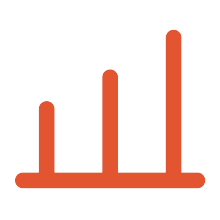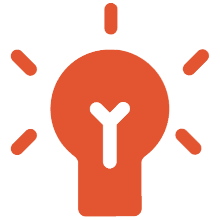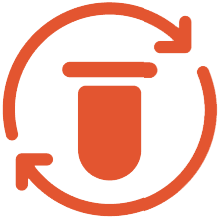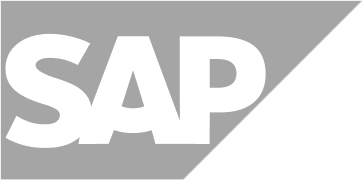Organization
Organizational Development
When silos, outdated processes or resistance hinder progress, it is time for targeted organizational development. Create efficient structures, clear processes and a strong corporate culture that sees change as an opportunity.
The challenge
A static organization prevents growth.
Dynamic markets, digital transformation and changing customer needs require change.
- A lack of flexibility leads to slow decision-making processes.
- Resistance to change inhibits innovation and progress.
- Outdated structures and hierarchies block change.
The solution
Organizational development
Transforming the company step by step with change management and organizational design.
- An in-depth analysis reveals the need for action.
- We formulate clear goals and work together to find a solution.
- We implement the results and ensure sustainable change.
The resulte
Increasing performance
Your organization becomes more sustainable, innovative and resilient.
- Greater speed of innovation through optimized processes.
- Motivated employees through more personal responsibility and co-determination.
- Sustainable competitive advantage through continuous further development.
Three terms, three meanings.
Organizational development, change, transformation - what's the difference?
Organizational development, change, transformation - what's the difference?
These three terms are often used synonymously, but they have different focuses and objectives:
- Organizational development: Long-term, continuous improvement of corporate structures, processes, and corporate culture with a strong focus on participation, agility, and initiative. The goal is to create an adaptable, innovative organization.
- Change management: The targeted control and support of change processes to minimize resistance, strengthen employee loyalty, and ensure effective implementation. Particularly important in digital transformation, mergers, or new business models.
- Transformation management: Comprehensive and profound corporate change that requires strategic realignment, cultural change, and fundamental restructuring. Relevant for disruptive change, digitalization, or market upheavals.
Evolution or revolution
Which transformation strategy suits your company?
Which transformation strategy suits your company?
Not every organization needs the same degree of change. The optimal transformation strategy can range from incremental adjustments to radical realignment.
- Incremental change: Small, step-by-step optimizations of processes and structures to continuously improve efficiency, agility, and competitiveness.
- Modular transformation: Targeted adjustments to individual business areas or departments to leverage innovation potential and drive digital transformation in a targeted manner.
- Radical transformation: Fundamental redesign of business models, processes, and corporate structures to ensure sustainable competitive strength in a dynamic market.
A proven concept for profound transformations is zero-based redesign: Instead of just gradually improving existing processes, the entire organization is rethought from the ground up. Breaking down silos, questioning inefficient structures, and creating a future-oriented organization - these are the core principles of this approach.
This strategic change is particularly suitable for companies that want to completely realign themselves, master digital disruption, or remain market leaders in a rapidly changing environment.
Organizational development
Advantages of a structured change process.
- More agile and innovative organization.
- Higher employee satisfaction and motivation.
- Competitive advantage through future-proof structures.
- Efficient and sustainable implementation.
Why we are the right partner.

We support you in planning and ensure successful implementation and long-term integration.

Our team consists of experienced organizational development and innovation experts who combine proven methods with the latest trends.

We adapt transformation processes precisely to the needs of your company instead of relying on standard solutions.

Download
The art of evolving
While others are still debating, the market leaders of tomorrow have long since understood this: Modern organizational development is not a tiresome project - but their greatest competitive advantage. Discover in this white paper how your company can continue to develop successfully while your competitors remain at a standstill.
- We analyze the status quo and work with you to define clear change objectives.
- We develop a tailor-made strategy and accompany the structured implementation in the organization.
- We ensure long-term integration and continuous optimization.
Organizational development - the key to successful corporate transformation
Imagine your company as a living organism: It grows, adapts and constantly evolves. This is exactly where modern organizational development comes in - a strategic approach that goes far beyond simple process optimization and positions your company holistically for the future.
The art of systematic transformation
In a time when change is the only constant, the ability to continuously develop is crucial to the long-term success of your company. Organizational development orchestrates this change by bringing structures, processes and, above all, people into harmony. The result? An agile, innovative and sustainable organization that sees challenges as opportunities.
The path to customized change
Depending on the initial situation and objectives, we rely on three proven approaches:
- Participatory organizational development for evolutionary adjustments in which your employees actively shape change
- Change management for medium-sized change processes that optimally combine structure and flexibility
- Transformation management with zero-based redesign for fundamental reorientations when a “reset” is required
The proven triad of change
We design your change process based on Kurt Lewin's timeless 3-stage model of change:
- The “unfreeze” phase: Here we create the foundation for change through intensive analysis and transparent communication. Together we identify the potential and develop a deep understanding of the need for change.
- The “change” phase: In this creative phase, we develop your customized vision of the future and work out concrete solutions. Your managers become role models who actively drive change.
- The “refreeze” phase: Sustainable implementation ensures long-term success. New structures and behaviors become part of your company's DNA.

Success factors for sustainable transformation
Our holistic support comprises three core areas:
- Culture & mindset: We establish a dynamic culture of innovation using methods such as design thinking and scrum. The inspiration for change comes from top-down.
- Structure & processes: Flexible organizational structures are created through cross-functional teams and digital collaboration platforms. Innovation becomes an integral part of your corporate DNA.
- Change management: We ensure the sustainable success of your transformation through continuous coaching, data-based performance measurement and individual support.
With this integrated approach, we accompany you on your way to becoming a future-proof, agile and successful company - ready for the challenges of tomorrow.
The methods
Lead user method
The driving force behind innovation is often advanced users with a sense for customer requirements and the markets of tomorrow. We use these attributes in the lead user approach: experts in our global lead user network enhance your innovation projects with a wealth of experience and active collaboration.
Service design
Customer-focused services leave a lasting impression. With the service design approach, we develop an understanding for customer expectations and needs together with you. With this knowledge, we design the interaction along the customer journey to be more intuitive. Consequently, you excite customers and trust in your brand grows.
Design thinking
Design thinking solves problems systematically and accelerates the innovation process. The customer-focused approach is suitable for the development of better products, services, and business models. In an iterative and agile design process, we analyze the problem, identify solutions, and test the result together with you.
Agile project management
With innovation projects, the result is mostly uncertain and requires agility, flexibility, and quick results. Agile project management simplifies the customer-focused development of high-quality innovations, especially in product development. Work in agile teams is efficient, and the results are quickly visible.
Innovation contest
The innovation contest allows new ideas to emerge in your company. An internal competition for ideas makes the creativity of your employees visible and unveils the unexpected potential of staff. You fill your ideas pipeline efficiently and with structure, while promoting a positive culture of innovation at the same time.
Innovation studio
In the innovation studio, we work together on the next big innovation from your company. When doing so, we take on the risks in the early phase of your innovation project. This way you reduce development costs and increase innovation success.
Das House of Innovation

Das House of Innovation
Das House of Innovation ist ein mehrstufiges Modell für ein ganzheitliches, strategisches Innovationsmanagement. In der vereinfachten Darstellung zeigt das Modell die Bausteine für erfolgreiche Innovation. Damit ist das Modell die ideale Ausgangslage, um Innovationsmanagement in einer Organisation systematisch zu analysieren und entsprechend den Bedürfnissen aufzusetzen.
Die Basis des House of Innovation bildet die Innovationskultur. Auf diesem Fundament bauen die Struktur sowie der Innovationsprozess und die Innovationsmethoden auf. Das Dach bildet die Innovationsstrategie.
Die genaue Ausgestaltung der einzelnen Bauelemente und Räume hängt von der jeweiligen Organisation ab. Das House of Innovations ist somit keine Blaupause, die sich einfach übertragen lässt.
Wir erheben daher mit unseren Kunden in einem ersten Schritt den Ist-Zustand und sehen uns dann den Soll-Zustand an. Bei dieser ganzheitlichen Betrachtung werden Mitarbeiter:innen aus verschiedenen Bereichen des Unternehmens eingebunden. Das Ergebnis: ein verständliche Darstellung des unternehmenseigenen Innovationsmanagement, das auf einem gemeinsamen Verständnis aller Mitarbeiter:innen beruht. Damit sind die Entwicklungsfelder für Neues sichtbar und die Innovationsbreitschaft im Unternehmen steigt.
Want to learn more? Get in touch with us now and arrange a consultation date.
“Many issues are taken for granted internally and are no longer questioned. An outside perspective often helps to break away from old ways of thinking.”
“Everyone talks about innovation and how important good innovation management is. Lead Innovation was the first to show how it's done. And that didn't happen by chance: precise and detailed preparatory work, a structured and excellently organized lead user conference, and a fantastic and competent lead team helped us achieve success.”
Frank Bistrick Head of Product Development, Westfälische Provinzialversicherung
Dr. Dr. Ildikó Amann-Zalán fmr. Head Medical Affairs & QM, Roche Diagnostics GmbH



















